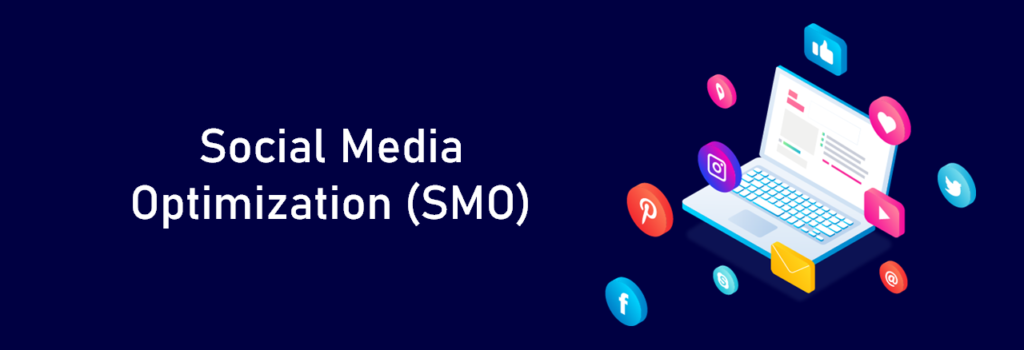
Social media optimization (SMO) is the use of a number of outlets and communities to generate publicity to increase the awareness of a product, service brand or event. Types of social media involved include RSS feeds, social news and bookmarking sites, as well as social networking sites, such as Facebook, Twitter, video sharing websites and bloggingsites. SMO is similar to search engine optimization, in that the goal is to generate web traffic and to a site and increase awareness for a website. In general, social media optimization refers to optimizing a website and its content to encourage more users to use and share links to the website across social media and networking sites. SMO also refers to software tools that automate this process, or to website experts who undertake this process for clients.
The goal of SMO is to strategically create interesting online content, ranging from well-written text to eye-catching digital photos or video clips that encourages and entices people to engage with a website and then share this content, via its weblink, with their social media contacts and friends. Common examples of social media engagement are “liking and commenting on posts, retweeting, embedding, sharing, and promoting content”. Social media optimization is also an effective way of implementing online reputation management (ORM), meaning that if someone posts bad reviews of a business, a SMO strategy can ensure that the negative feedback is not the first link to come up in a list of search engine results.
In the 2010s, with social media sites overtaking TV as a source for news for young people, news organisations have become increasingly reliant on social media platforms for generating web traffic. Publishers such as The Economist employ large social media teams to optimise their online posts and maximise traffic, while other major publishers now use advanced artificial intelligence (AI) technology to generate higher volumes of web traffic
Facebook/ Linkedin / Twitter
Facebook / Linkedin / Twitter has in recent years become a popular channel for advertising, alongside traditional forms such as television, radio, and print. With over 1 billion active users, and 50% of those users logging into their accounts every day it is an important communication platform that businesses can utilize and optimize to promote their brand and drive traffic to their websites. There are three commonly used strategies to increase advertising reach on Facebook:
- Improving the effectiveness of posts, achieved by adjusting the length and timing of posts to influence the number of likes and comments it receives. This will help the post reach a greater number of Facebook users, ultimately increasing its reach.
- Increasing network size, achieved by analyzing user behavior to determine how often to post and what type of content to post.
- Buying more reach, achieved by paying Facebook to advertise a post.
Improving effectiveness and increasing network size are organic approaches while buying more reach is a paid approach which does not require any further action. Most businesses will attempt an “organic” approach to gaining a significant following before considering a paid approach. Because Facebook requires a login, it is important that posts are public to ensure they will reach the widest possible audience. Posts that have been heavily shared and interacted with by users are displayed as ‘highlighted posts’ at the top of news feeds. In order to achieve this status, the posts need to be engaging, interesting, or useful. This can be achieved by being spontaneous, asking questions, addressing current events and issues, and optimizing trending hashtags and keywords. The more engagement a post receives, the further it will spread and the more likely it is to feature on first in search results.

